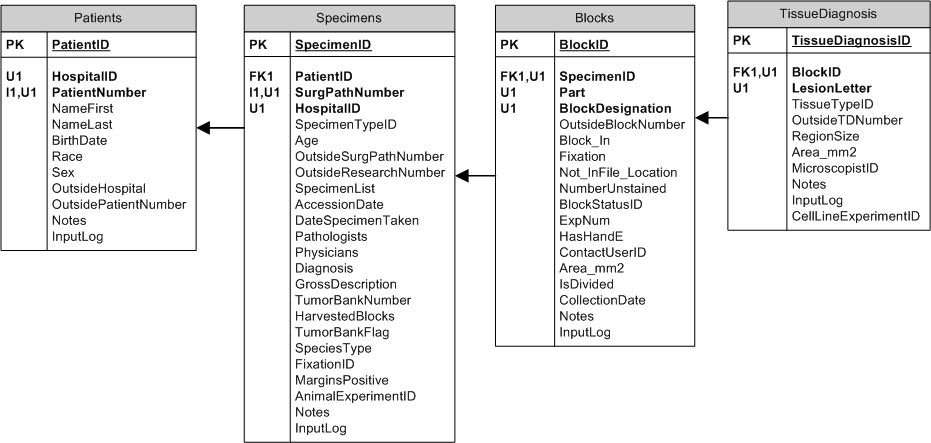
 |
| The
Patients, Specimens, Blocks, and Tissue Diagnosis tables all form a
one-to-many relationship. |
| A Specimen represents the all
the tissue and organs that come out of a patient during a
Surgery. It is possible for a patient to have multiple specimens.
A specimen can be uniquely identified by a hospital name and a
SurgPathNumber, a unique id assigned to all specimens in the hospital's
Surgical Pathology department. |
|
| The blocks table represents
tissue that is cut from the specimen and
put into paraphin blocks. A block can be uniquely identfied by a
SpecimenID, a part number, and a block designation. The specimen
is
divided into several parts. For example, the seminal vesicles may
be
one part of a prostate specimen. Then, for each block in a part,
the
blocks are given block-designations. The first block may be
called A,
the second B, and so on. A word on naming: The blocks table represents the donor or regular blocks. For naming, unless I specify ArrayBlock, I'm talking about a regular block. Tissue from these regular blocks (this table) are used to create ArrayBlocks, a totally different table. |
|
| A TissueDiagnosis represents a
sub-region on a block that is assigned a
particular diagnosis (for example, cancer). The sub-region is in
the
shape of an irregular cylinder. A block can yield several
TissueDiagnosis's. For example, a block may have a cancer region,
a normal region, and atrophy region. Each of these would get its
own TissueDiagnosis. |
|
© Copyright 2009 | All Rights Reserved | The Johns Hopkins University